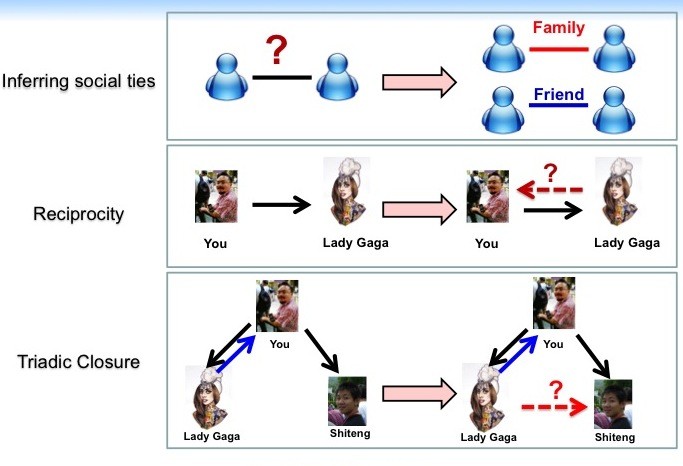
In online social networks, social relationship is the most basic unit to form the network structure. Relationships between users can be either directed or undirected.
We focus on studying two aspects of social tie: (1) to which extent the label of social ties between people can be inferred in social networks? (2) how reciprocal (two-way) relationships are developed from parasocial (one-way) relationships and how the relationships further develop into triadic closure and communities? (3) how communities dynamically evolve over time?
We propose a unsupervised dynamic factor graph model to infer advisor-advisee relationship from the coauthor network (Wang et al., KDD'10) and a partially labeled factor graph model to infer the type of social relationships (Tang et al., ECML/PKDD'11, PKDD Best Student Paper Runnerup). We further incoporate social theories (e.g., social balance theory, social status theory, structural hole theory, two-step flow theory, and strong/weak tie) into a triad-based factor graph model to infer the formation of reciprocal relationships from parasocial relationships (Hopcroft et al., CIKM'11) and to infer the formation of triad closure (Lou et al., TKDD'13), and leverage features defined based on those social theories to infer social ties across heterogeneous networks (Tang et al., WSDM'12). We have further proposed a co-evolution model for modeling the dynamic changes of communities in social networks (Sun et al., TKDE'13).
Related data sets and codes: [Social-Tie] [Reciprocity&Triadic Closure]
Invited talks were given at different venues and related slides can be downloaded here. [PDF]



